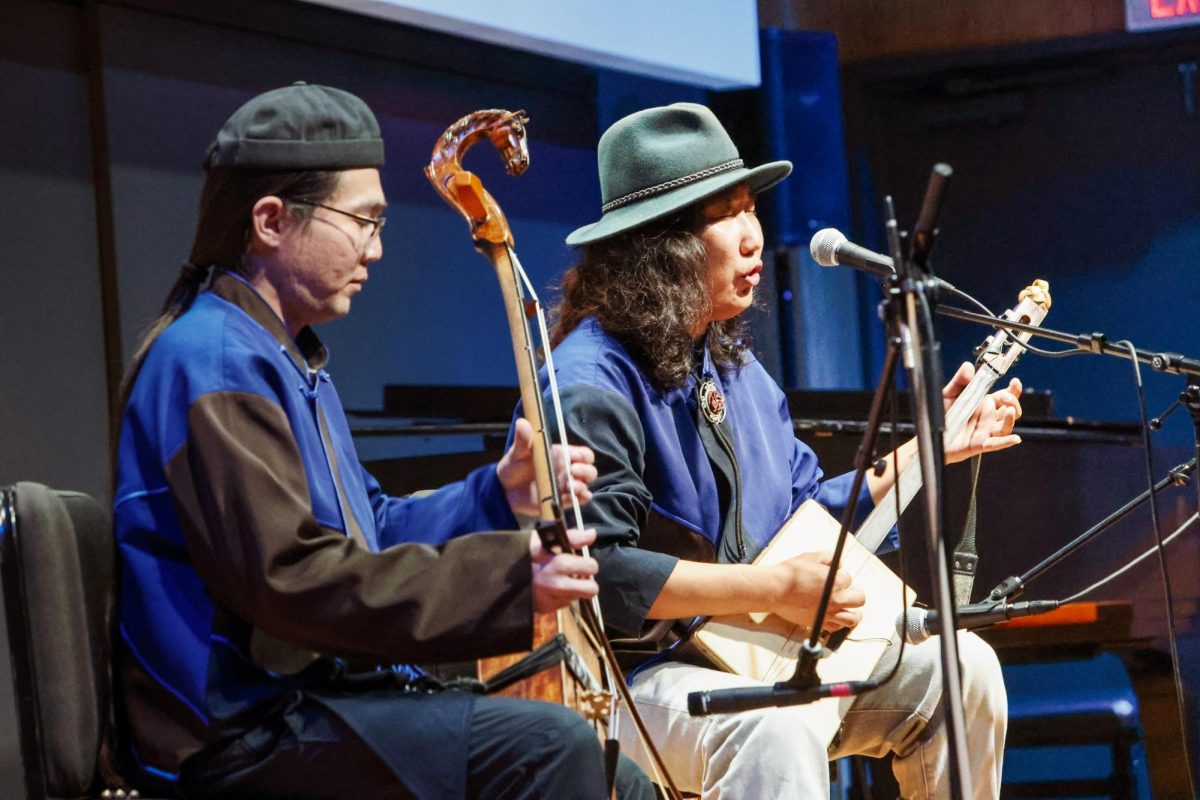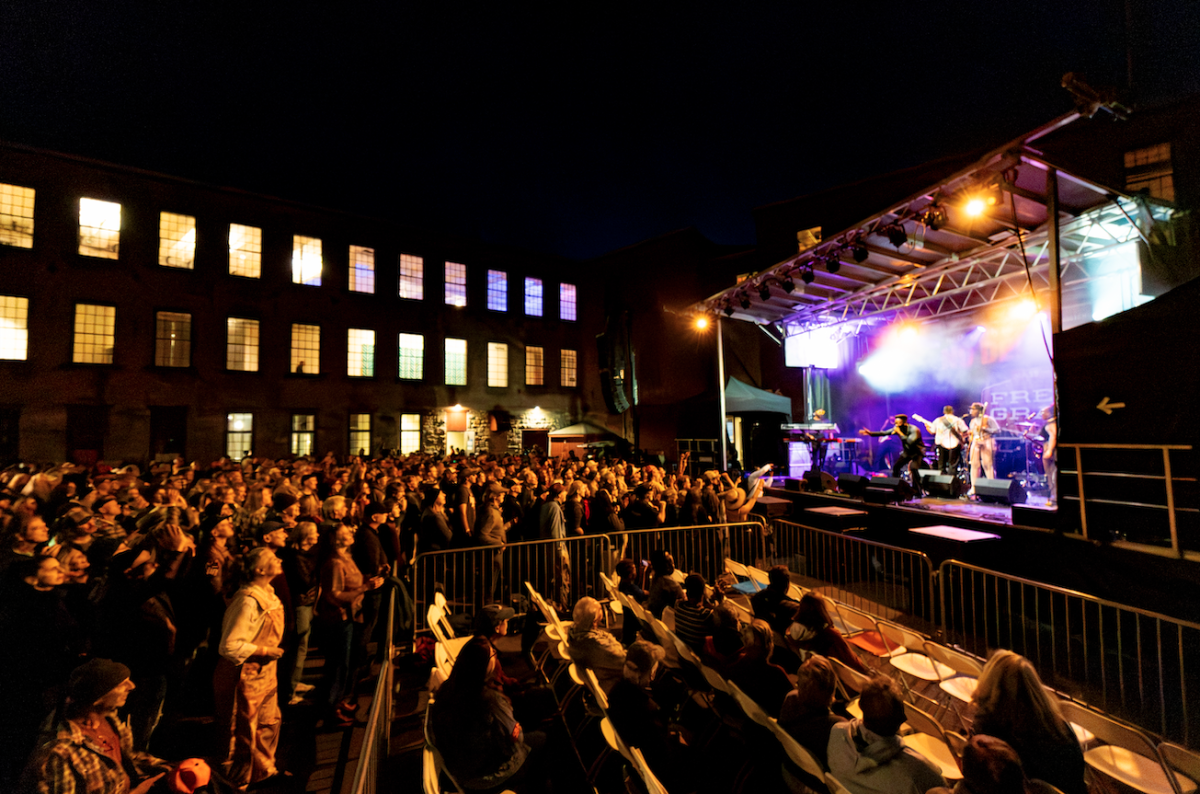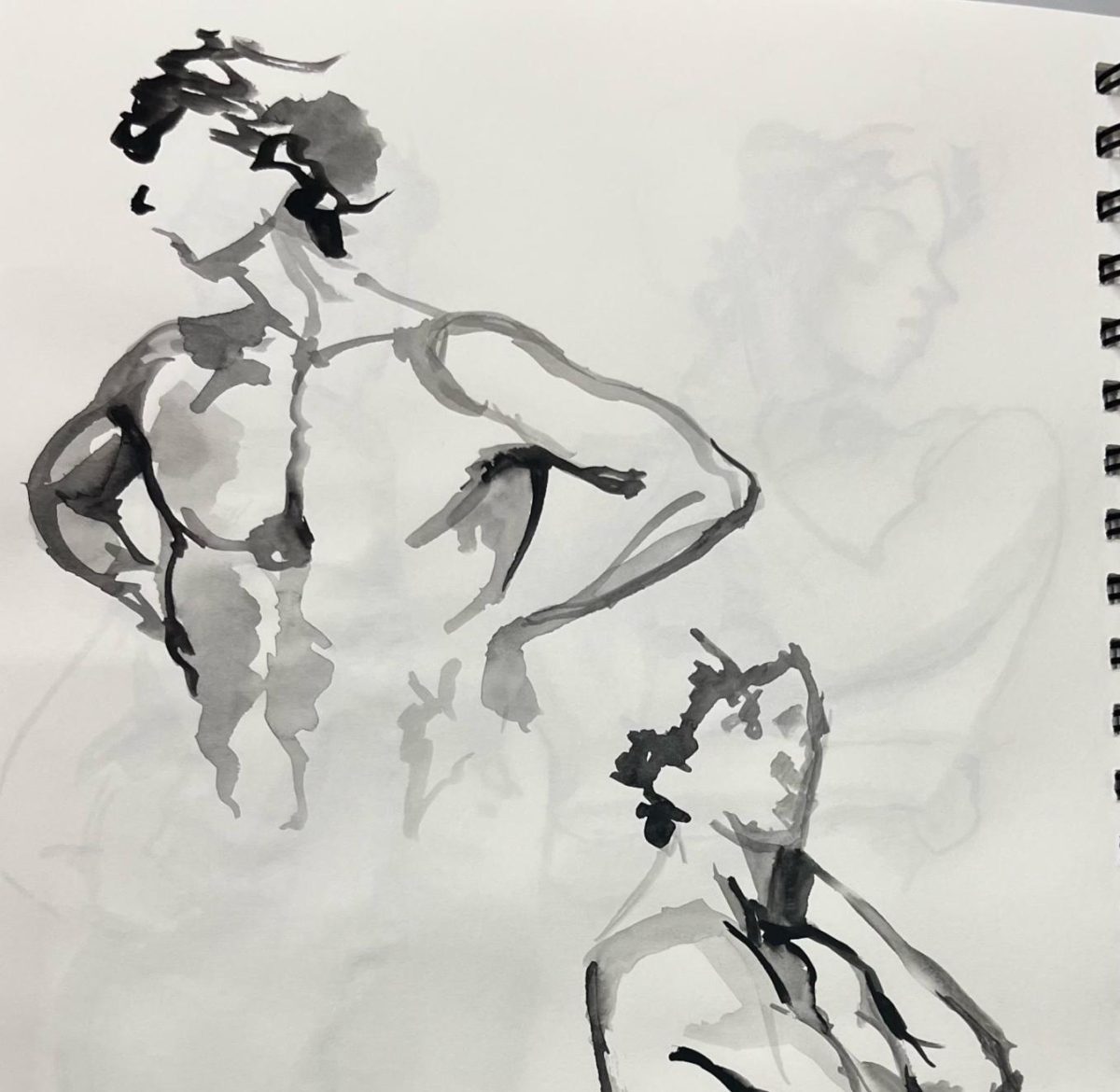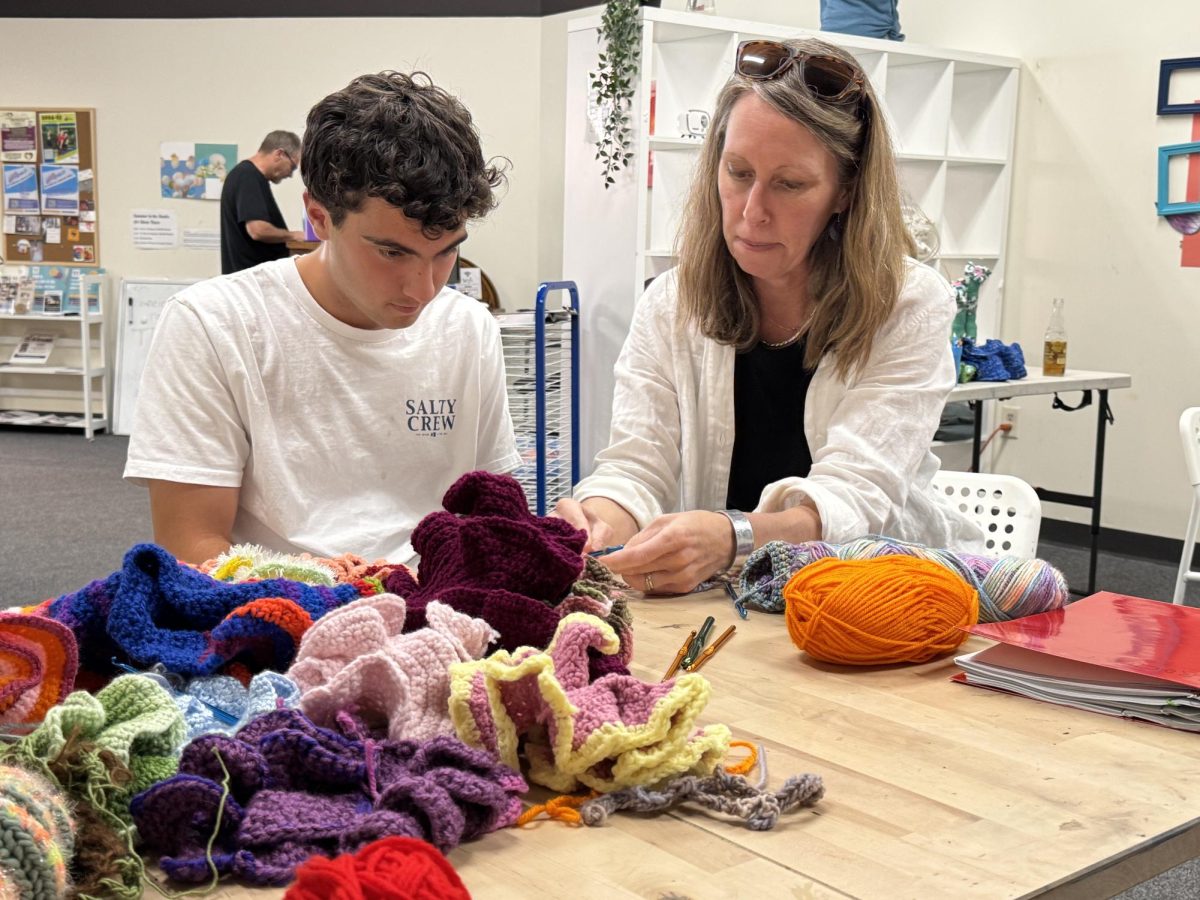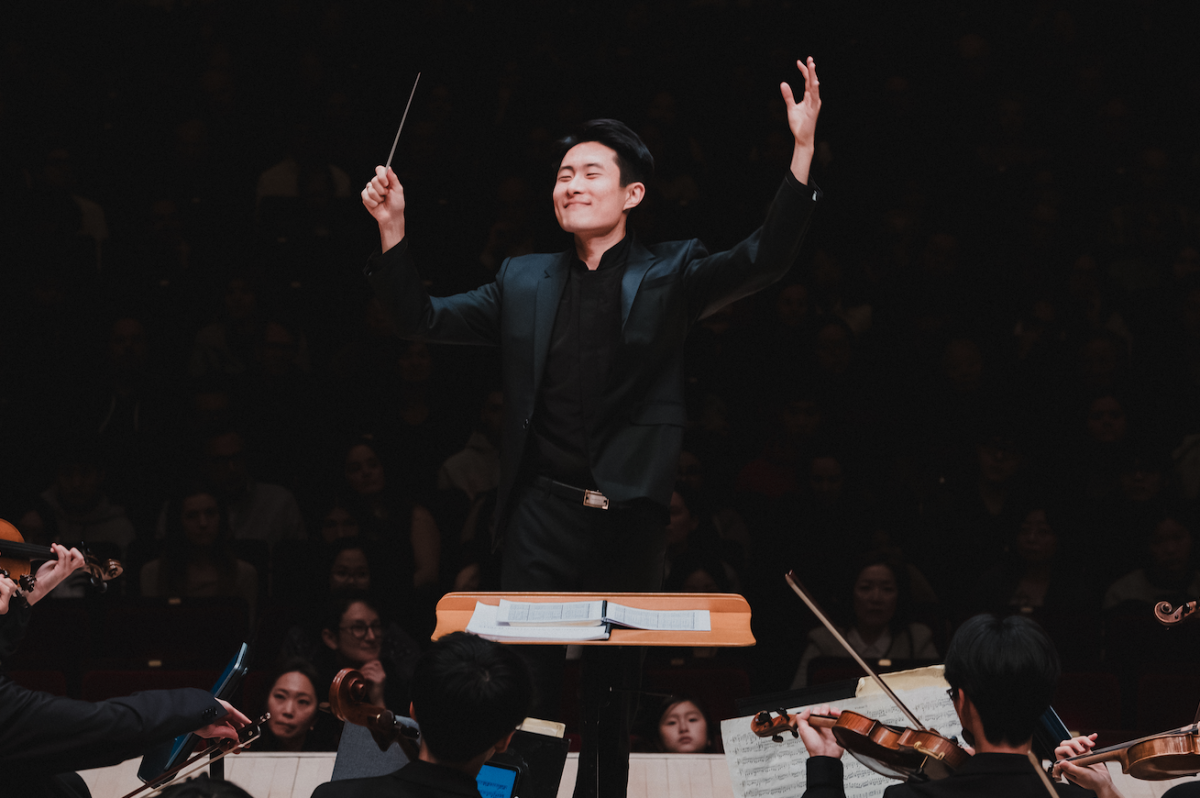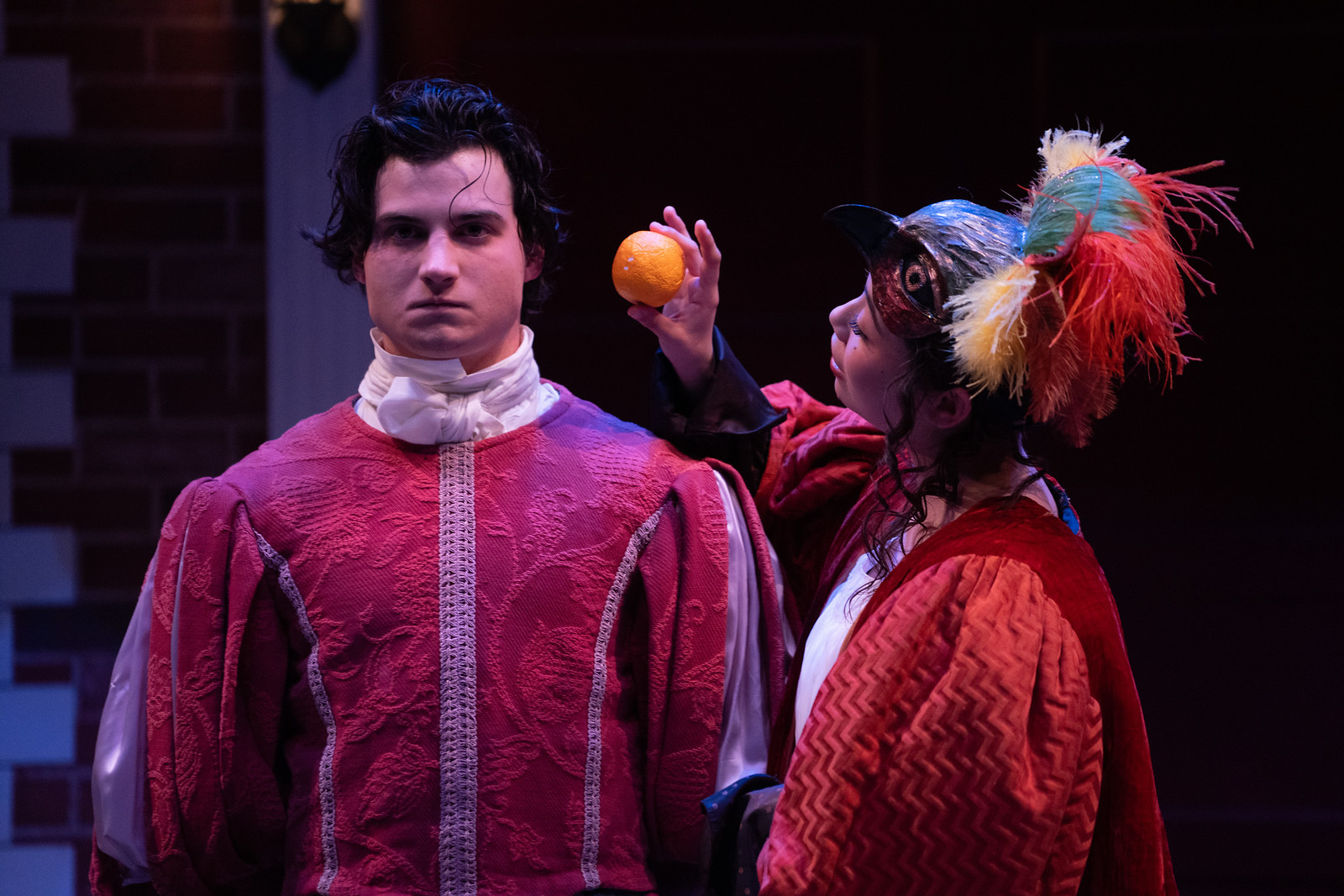
The lights were dim and blue. Everyone on stage was frozen in tableau. For a few peaceful minutes, the actors were a blank canvas — literally and figuratively — wearing nothing but white undergarments. This was the first sight that greeted audiences at this weekend’s theatre department production of Much Ado About Nothing, a new interpretation of Shakespeare’s comedy about romance and deception.
Much Ado features romantic entanglements between two couples. Benedick and Beatrice — played by Rijul Jain ’25 and Emily Singer ’28, respectively — appear to hate one other but are tricked into admitting their love. And Claudio and Hero — played by Ben Zobian ’27 and Delilah Delgado ’25, respectively — love each other but are separated by a malicious lie.
One of the production’s unique approaches to staging the centuries-old tale was its setting. The department’s interpretation was set in 19th-century England, unlike the original version, which is set in 16th-century Italy. The soldier uniforms and dresses donned by the actors reflect the historical circumstances of the time: England’s naval power and growing imperial domination worldwide.
The creative team also used costumes to illustrate how the fictional world slowly falls apart and transforms — deceiving not only the characters but the audience as well. “An outfit can be a sort of trap, or it can be playing dress up,” said Erica Tearpening-Romeo, visiting professor of theatre and the play’s director.
Throughout the play, the characters removed articles of clothing and later redressed, which Tearpening-Romeo said represents their similarity to puppets — an idea that originated during the audition process. “I was sitting with a bunch of head shots of these actors on the floor, and I’m moving them around in different configurations, and it just got me thinking, ‘What a weird kind of puppeteer I feel like,’” she said.
The costumes evolved alongside the characters throughout the show. “[My character] is seen by them as a quick-witted, disaffected bachelor and plays into the perception at the outset,” Jain wrote to the Record. “As the play goes on, and that facade cracks and he transforms and realizes he is in love with Beatrice, he eventually leaves that posturing behind. The underdressing underscores these transformative moments, almost enabling them to happen.”
Professor of Theatre Sydney Maresca, the show’s costume designer, first started to develop her vision early this semester, drawing sketches for the characters both fully dressed and in their white underwear.
Maresca also decided to incorporate bird masks for a scene at the masquerade ball — in which tensions between Beatrice and Benedick rise — inspired by prints from John James Audobon’s Birds of North America. Birds, like other “rarities” of the New World, were exoticized by wealthy 19th-century Europeans and often used for amusement;.The actors were encouraged to compare their own characters to these exotic birds.
Members of the cast were also invited to help make the bird masks under the guidance of local sculptor and artist Becky Kravitz. According to Kai Stevens ’28, who played Balthasar in the production, the craftwork helped the actors understand the text and their characters in new ways.
“I made a bird mask based on an image I saw of a group of woodpeckers,” Stevens said. “The process definitely helped me think about the bird metaphor during the party scene and how comparing certain birds to characters, like woodpeckers to soldiers, could reflect something pertinent about their personalities. Claudio ended up wearing the mask I made, which I think was very fitting.”
According to Tarpening-Romeo, the rehearsal process was intense but worthwhile. “Not every rehearsal process is as much of a delight as this one was,” she said. “I almost always felt better at the end of rehearsal, which is really rare, and it’s just a testament to this group of people.”
Editor’s note: Juno Pelczar, a costume shop assistant and member of the Record editorial board, was not involved in the writing or editing of this article.




